

Queer Places:
Yale University (Ivy League), 38 Hillhouse Ave, New Haven, CT 06520
96 Boulevard du Montparnasse, 75014 Paris, France
14
Avenue du Maine, Paris, France
1 Rue Leopold-Robert, Paris, France
60
Washington Square South, New York, NY
3 Washington Square North, New York, NY
White Hart Inn, Salisbury, Connecticut
Highland Street, West Hartford, Connecticut
Foote-Ward Cemetery
Guilford, New Haven County, Connecticut, USA
 Mary
Eliot Foote (November 25, 1872 - January 28, 1968) was an American painter and
producer of notes of Carl
Jung's seminars. As an artist, she lived and worked in New York's Washington
Square, Paris and Peking.
From 1928 to the 1950s she lived in Zurich and created and published notes of
Carl Jung's seminars until World War II. She returned to the United States in
the 1950s and spent her later years in Connecticut, where she died.
Mary
Eliot Foote (November 25, 1872 - January 28, 1968) was an American painter and
producer of notes of Carl
Jung's seminars. As an artist, she lived and worked in New York's Washington
Square, Paris and Peking.
From 1928 to the 1950s she lived in Zurich and created and published notes of
Carl Jung's seminars until World War II. She returned to the United States in
the 1950s and spent her later years in Connecticut, where she died.
Mary Eliot Foote was the daughter of Christopher Spencer Foote (1837-1880) and Hannah Hubbard (1840-1885).[1][2] She was born in Guilford, Connecticut, as was her younger sister, Margaret Foote Hawley, who also became an artist[3] and painted a profile portrait of a girl named Mary Foote.[4][5] Mary Foote was a member of the Daughters of the American Revolution, the great-great-granddaughter of General Andrew Ward (1727-1799) and Diana Hubbard Ward. Ward, who was born and died in Guilford, Connecticut, was commended for his bravery by George Washington. Foote's grandparents were George Augustus Foote and Eliza Spencer and her great-grandparents were Eli Foote and Diana Ward.[9] The family was chronically poor, but interesting. Before Guildford, they had lived in Colchester and Wethersfield, Connecticut. After the girls were orphaned in 1885, Margaret was raised by her aunt, Harriet Foote Hawley and her husband in Washington, D.C.,[3] and Mary was taken by her aunt, Mrs Coe, wife of a judge in Meriden. After that Mary went to stay with Professor and Mrs Edward H. Jenkins of New Haven and then with her uncle-by-marriage, Civil War General Joseph R. Hawley of Hartford, the President of the Centennial Commission and publisher of the Hartford Courant. He was married to Harriet "Hattie" Ward Foote, a cousin of Isabella Beecher Hooker.[6] While living in Hartford, Foote graduated from Hartford Public High School. Her cousin was Lilly Gillette Foote, who was governess to Mark Twain's children.[6] Samuel L. Clemens was a neighbor of the Hawleys. For a period of time Mary Foote lived in the Mark Twain (Samuel L. Clemens) household and was friends with Susy and Clara Clemens.[7][8]
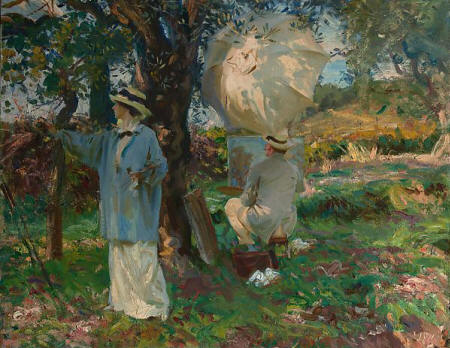
Mary Foote shown at her easel painting in an olive grove at San Virgilio, Italy, in 1913. Oil painting
by John Singer Sargent, The Sketchers (1913). Virginia Museum of Fine Arts, Richmond. Arthur and Margaret Glasgow Fund. Photo: Katherine Wetzel. © Virginia Museum of Fine Arts.
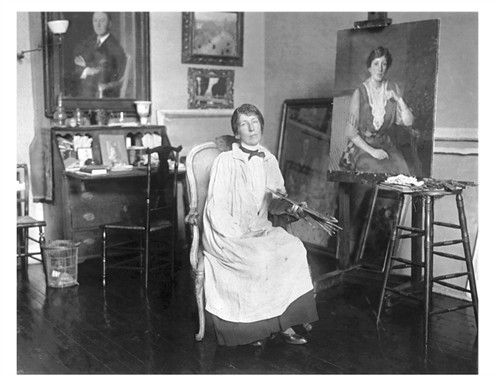

Portrait of Mary Foote (c. 1898) while a student in Paris and Giverny by
Ellen Emmet Rand.
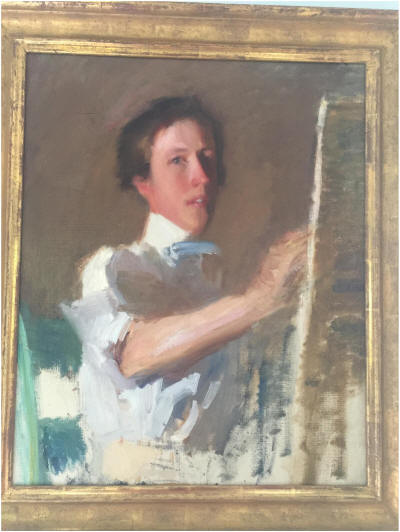
Unfinished self-portrait by Mary Foote (undated)
Ruth Draper by Mary Foote
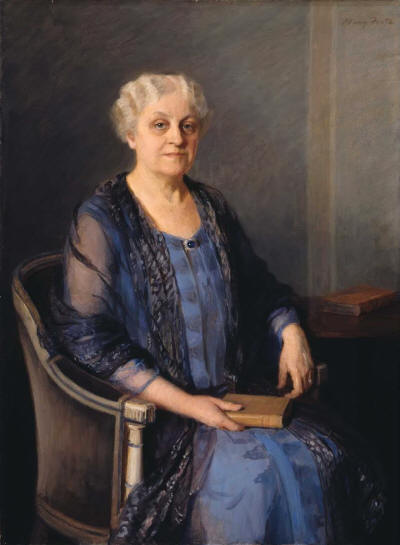
Carrie Chapman Catt by Mary Foote

Mabel Dodge Luhan by Mary Foote
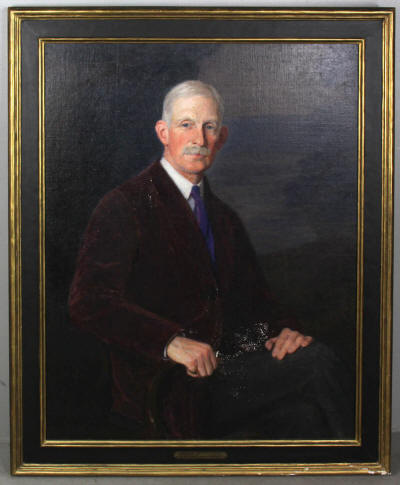
Benjamin Preston Clark, (President of the Board of Trustees)
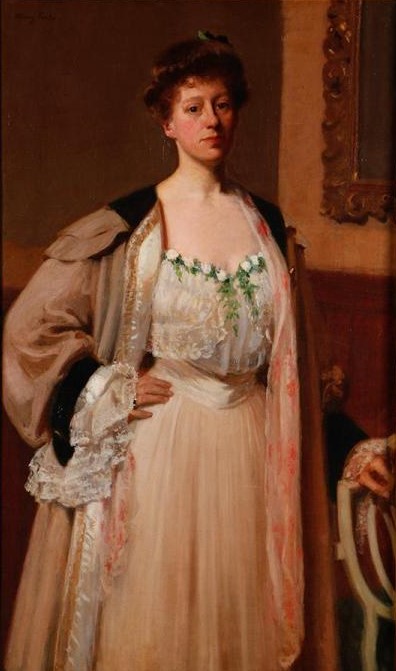
Mrs. Wilfred Worchester by Mary Foote
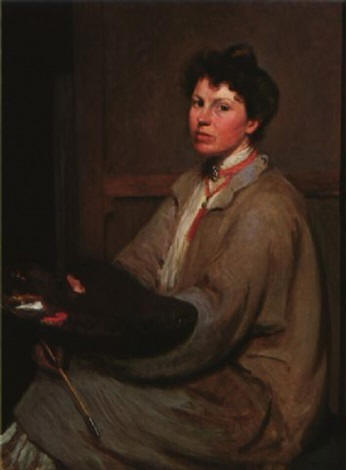
Portrait of Ellen Emmet Rand by Mary Foote
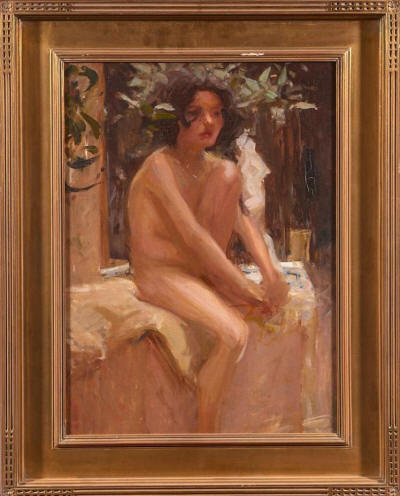
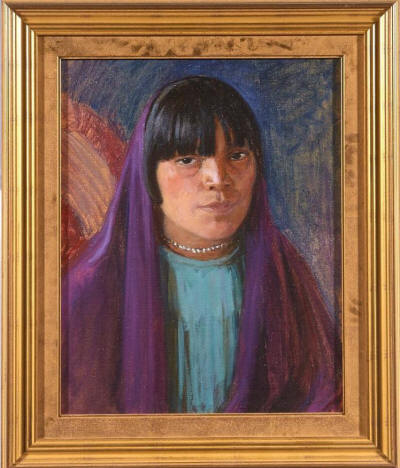
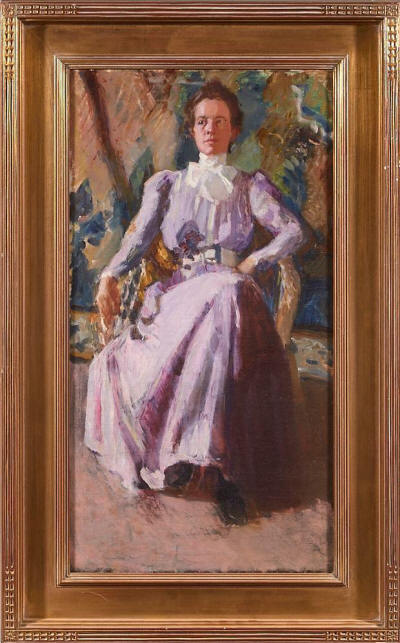
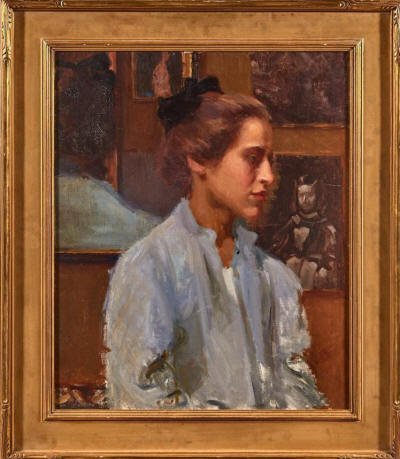
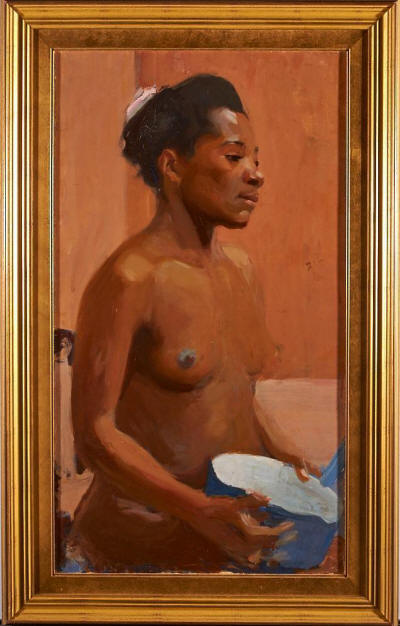

Beginning in 1890, she studied art at Yale School of Art.[6][10] In 1894, the Alice Kimball English Prize, which was established to support summer travel, was awarded to Foote. The William Wirt Winchester Prize, which funded two years of study in Europe, was awarded to Foote in 1897; it was considered the "largest prize of its kind" in the United States at that time.[11] Foote travelled to Paris, France, setting up a studio at 96 Boulevard Montparnasse with the American painters Ellen Emmet Rand, Lydia Field Emmet, Jane Erin Emmet, and Edith Leslie Emmet. These girls, whom she knew through New York relatives, were descendants of Thomas Addis and Robert Emmet, and were related throught he Temples to Henry James, who was a frequent guest at the studio. Mary Foote studied with John Singer Sargent.[10] She was a student of Frederick MacMonnies at the Académie Carmen in Paris and at the MacMonnies country house at Giverny, near Paris; the gardens there became the subject of many of her paintings.[12] She also made a portrait painting of MacMonnies.[13] Her friends included art patron Mabel Dodge, dancer Isadora Duncan, writers Gertrude Stein and D.H. Lawrence,[14] painters James McNeil Whistler, and Cecilia Beaux.[7] She later moved her studio to 14 Avenue du Maine and then to 1 Rue Leopold-Robert.
In 1901, she returned to New York City to set up a permanent professional studio for the painting of portraits, first at 60 Washington Square and then, later, at 3 North Washington Square in a building that still stands. She earned a comfortable living from her portrait commissions;[6] her list of clients reads as a Who's Who of the art scene of her day. Foote painted a wide range of subjects including portraits, figures, florals, and landscapes.[7] She attended Mabel Dodge's salons at 23 Fifth Avenue, though she later thought they were in bad taste. Foote's work was exhibited at the Pennsylvania Academy of Fine Arts, along with the works of Robert Henri, Cecilia Beaux, Edmund Tarbell and other noted artists.[15] Her work was described as follows: Mary Foote sent some fine canvases, of which the most striking, perhaps, was that of Mrs. John Carpenter-an exceedingly skilful management of a blue hat and a red coat, with well considered "repeat" accents in the book and cup and saucer upon the table. Her portrait of Mrs. Hermann Kobbe also showed a fine and subtle modeling, and the color value of the pink necklace in relation to the peculiar flesh tints of the subject was happily expressed.[15] At the Armory Show in 1913, she exhibited Old Lady. Foote lived and worked in Peking, China from December 1926 into early 1927. She went there with her friend, Pauline Emmet, and lived at 10 Tsui Hua Hutung, Peking.[14][16] During the 1920s, she shared her studio and had a relationship with Frederick MacMonnies, and went into a deep depression after it ended.[17] She sought treatment from Smith Ely Jelliffe, and in 1927 closed down her studio.[17] One of her friends, Robert Edmond Jones, a stage designer in New York, had been a patient of Carl Jung and Toni Wolff. He advised Foote, who has been described as neurotic, to seek the treatment of Jung in Zurich, Switzerland.[14]
After closing her studio, Foote went to Zurich to see Swiss psychotherapist Carl Jung. Beginning in 1928, she worked for Jung, first transcribing his seminars and editing Jung's English phrasing, and then producing the bound copies for their participants.[17] For instance, her notes became the basis for The Visions Seminars, which was published in 1976.[10] Her secretary and assistant from the 1930s until the seminar series ended with World War II was an Englishwoman, Mrs. Emily Köppel, who was married to a man from Switzerland. The work was paid for by subscriptions, and supplemented initially by Mary Foote and later by Mary and Paul Mellon and Alice Lewisohn Crowley.[18] In the 1930s, Foote had a secret liaison with Harvard-educated German businessman Ernst Hanfstaengl. She was among the social circle of Mabel Dodge Luhan and visited her at her Villa Curonia.[10] A fellow friend, Muriel Draper, said of Foote: I cannot conceive of more conflicting psychological elements meeting under similar conditions without explosion. Almost everyone was in love or hate and only Mary Foote could come cutting through the snarled air like a cool smooth silver fruit-knife, severing at the crucial moments the crossed threads that were in danger of becoming firmly knotted entanglements.[10] She was also described as a tall, elegant woman.[14] Mary Mellon, wife of Paul Mellon, said of her, "She has great style. From her you will learn about the feeling relationships among people there. She is very frail and I'm afraid not very well. Take her to dinner at the Beaur-au-Lac and feed on her champagne and caviar."[19]
In 1958 she returned to Connecticut.[17][20] She was a guest subsequently at the White Hart Inn in Salisbury, Connecticut, where she had an amusing life among friends, and finally, on Highland Street, West Hartford. She died among friends on January 28, 1968 and is buried in the Foote-Ward Cemetery in Guilford, Connecticut.[2][20] Her papers are with the Yale University Library.[20]
My published books: